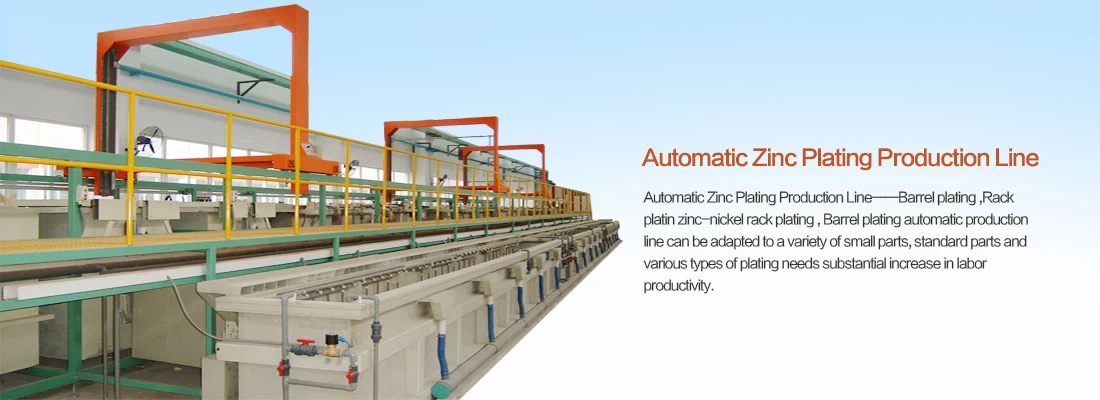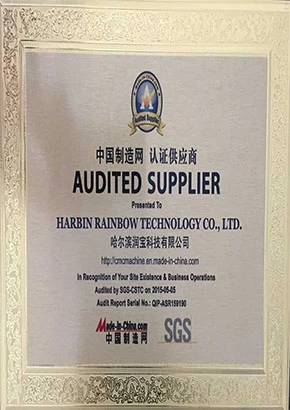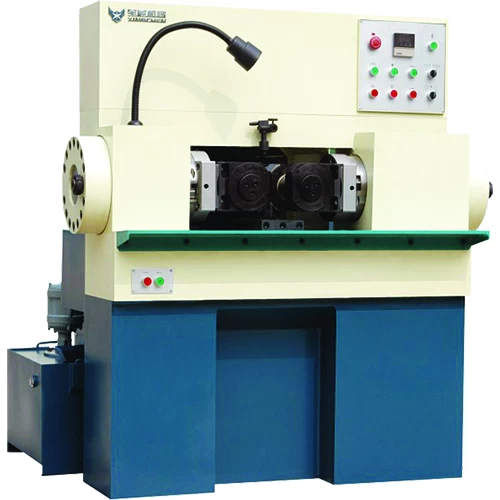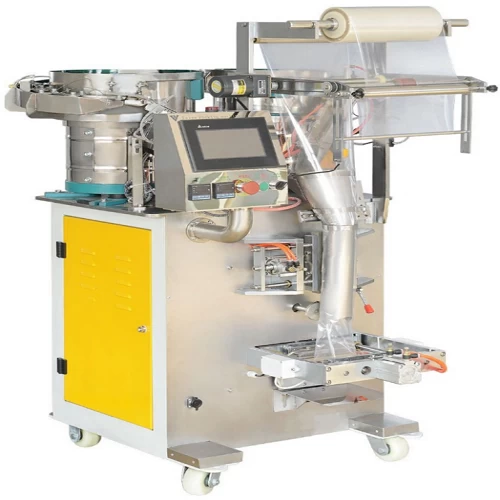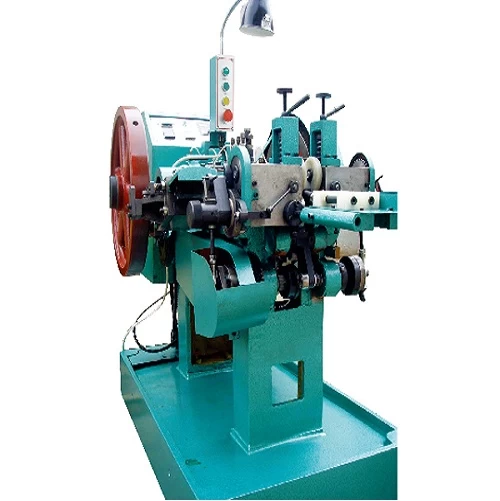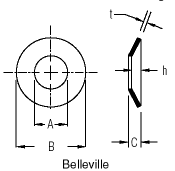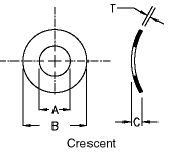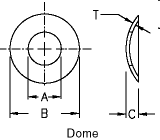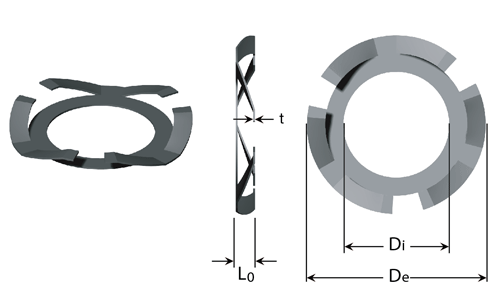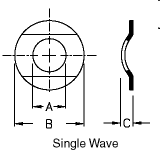Introduction of Spring Washers
Spring washers, sometimes called disc springs, are a subtype of washers. They lend their mechanical capabilities to the unique profile of the material: when subject to a load, the irregularities of the washer compress with a proportionate resistance to return to their predeflected shape. Spring washers are employed in applications where assemblies need a part to take up play, eliminate rattle, maintain assembly tension, compensate for expansion or contraction in materials after assembly, or to absorb intermittent shock loads and provide a controlled reaction under dynamic loads.
Operation
Deflecting under a load, a spring washer is very much like a compression spring. As such, the deflection rate of a wave washer is conditional of the washer's dimensions and materials. Thicker, taller spring washers can sustain more load. When under stress, the raised irregularities of the disc spring flatten to a predetermined degree. Spring washers are either under static or dynamic load. In a static load application, the basic function of the washer is to retain load and the elastic load rating of the washer material may be exceeded. For a dynamic load, the washer functions as a flexing spring and the yield limit must not be exceeded or permanent disfiguration will occur.
Spring washers undergo elastic deformation which is reversible and is determined by the material of construction. If the washer is overstressed or near the end of its cycle life, it will experience plastic deformation where some of its deflection is irreversible; this is the first sign of washer fatigue.
Spring washers have a small footprint and are valued in small machines where a coil spring would be unsuitable. Spring washers can also deflect in a linear, progressive, or regressive means and these devices show a symmetrical deflection around the washer's axis. Spring washers can be stacked to create spring sets or series where deflection and load capacity can vary without materially affecting the forces involved.
Production
Production methods of spring washers include stamping, machining, hot forged, rolled, or some combination of these. The following infographic explains common production protocol for spring washers according to material and application requirements.
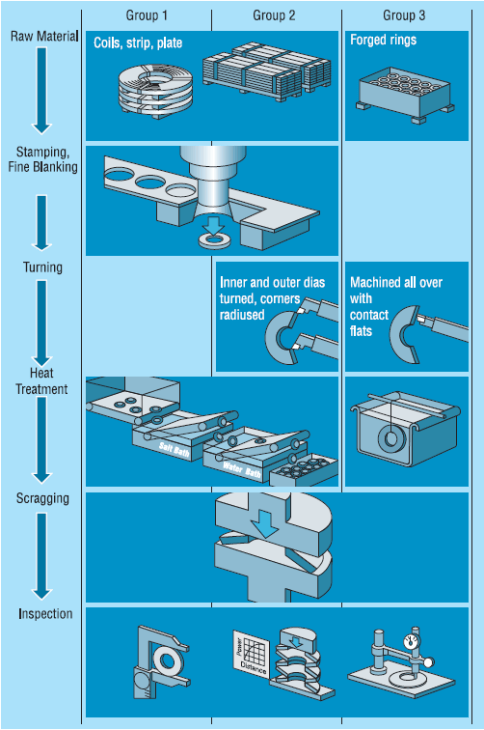
Table credit: Schnorr Corp.
Some spring washers will undergo a slight, acceptable plastic deformation after its first compression and it will not return to its previous height, though the washer is mechanically sound. This is known as 'setting,' and a manufacturer may choose it preset the spring washer in a process called scragging. Other production options include shot peening and adding corrosion resistant coatings to enhance the spring washer's life.
Configurations
There are several types of spring washers, as well as multiple options for their implementation.
Types
There are six primary instances of spring washers. Other types may exist as a specialty option through manufacturers.
|
Image credit: Seastrom Washers |
|
|
|
|
|
Image credit: Sodemann Industrifjedre |
|
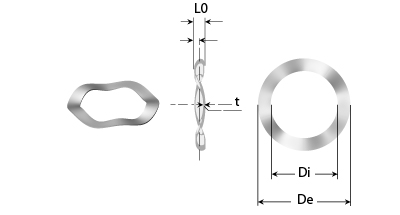 |
|
|
Sets and Series
Spring washers, with the exception of finger and single wave washers, are stackable and different permutations exist to vary deflection rates and load capacities. The optimal spring arrangement is the one which uses the least number of washers, which is best achieved by large outside disc diameters. The following video interprets the stacking and series options for all washers--except wave washers--and how they affect washer performance.
Spring washers, sometimes called disc springs, are a subtype of washers. They lend their mechanical capabilities to the unique profile of the material: when subject to a load, the irregularities of the washer compress with a proportionate resistance to return to their predeflected shape. Spring washers are employed in applications where assemblies need a part to take up play, eliminate rattle, maintain assembly tension, compensate for expansion or contraction in materials after assembly, or to absorb intermittent shock loads and provide a controlled reaction under dynamic loads.
Operation
Deflecting under a load, a spring washer is very much like a compression spring. As such, the deflection rate of a wave washer is conditional of the washer's dimensions and materials. Thicker, taller spring washers can sustain more load. When under stress, the raised irregularities of the disc spring flatten to a predetermined degree. Spring washers are either under static or dynamic load. In a static load application, the basic function of the washer is to retain load and the elastic load rating of the washer material may be exceeded. For a dynamic load, the washer functions as a flexing spring and the yield limit must not be exceeded or permanent disfiguration will occur.
Spring washers undergo elastic deformation which is reversible and is determined by the material of construction. If the washer is overstressed or near the end of its cycle life, it will experience plastic deformation where some of its deflection is irreversible; this is the first sign of washer fatigue.
Spring washers have a small footprint and are valued in small machines where a coil spring would be unsuitable. Spring washers can also deflect in a linear, progressive, or regressive means and these devices show a symmetrical deflection around the washer's axis. Spring washers can be stacked to create spring sets or series where deflection and load capacity can vary without materially affecting the forces involved.
Production
Production methods of spring washers include stamping, machining, hot forged, rolled, or some combination of these. The following infographic explains common production protocol for spring washers according to material and application requirements.

Table credit: Schnorr Corp.
Some spring washers will undergo a slight, acceptable plastic deformation after its first compression and it will not return to its previous height, though the washer is mechanically sound. This is known as 'setting,' and a manufacturer may choose it preset the spring washer in a process called scragging. Other production options include shot peening and adding corrosion resistant coatings to enhance the spring washer's life.
Configurations
There are several types of spring washers, as well as multiple options for their implementation.
Types
There are six primary instances of spring washers. Other types may exist as a specialty option through manufacturers.
|
Image credit: Seastrom Washers |
|
|
|
|
|
Image credit: Sodemann Industrifjedre |
|
 |
|
|
Sets and Series
Spring washers, with the exception of finger and single wave washers, are stackable and different permutations exist to vary deflection rates and load capacities. The optimal spring arrangement is the one which uses the least number of washers, which is best achieved by large outside disc diameters. The following video interprets the stacking and series options for all washers--except wave washers--and how they affect washer performance.



